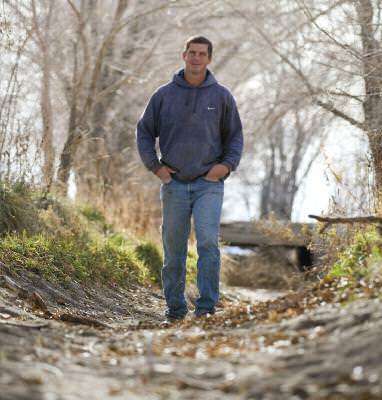edible garden
PERMACULTURE WAY
Mastering design and creating community through holistic gardening.
WRITTEN BY NATHAN ROSENBLOOM
ILLUSTRATION BY STEPHANIE CAMERON AND PHOTO BY SHEA EVANS
Permaculture is not a word that everyone has heard, but, in the Reno-Tahoe area, it is heading that way. Permies, as permaculture practitioners often call themselves, are actively engaging the community to offer what they believe is a sophisticated, holistic design science that can be applied on any scale, from backyard gardens to national forests.
Reno-Tahoe residents interested in permaculture are fortunate to have Neil Bertrando — owner of RT Permaculture, a consulting, design, and teaching business based in Reno — as a resource. Those who attend Bertrando’s workshops listen with rapt attention to the man who travels widely across the country teaching permaculture and consulting on farm design and management.
“The basic goal of permaculture is to design productive systems that improve ecosystem health and at the same time meet all of our human needs, instead of systems that mine and deplete our ecosystems to meet our needs,” Bertrando says. “We do learn a lot about tools and elements for design, but the main thing we emphasize in permaculture is the relationships between all elements in a given system.”
The food forest, or edible forest garden, may be the best known of the myriad permaculture design patterns. A food forest emulates the structure of natural forests, but instead of using native plant species, it substitutes the designer’s chosen plants. It might revolve around some apple trees with taller soil-building trees mixed in, some medicinal herbs planted underneath in different amounts of shade or sun, and some berry plants on the canopy edge, where they would naturally grow in a forest. The idea is that the food forest is able to feed itself because the various species use different nutrients in the soil, share other nutrients with each other, encourage soil biology to continue to make more soil, and help each other fight and confuse bugs that aren’t beneficial — a holistic system.

Vibrant Gardens
“I was doing permaculture for decades before I’d ever heard of it,” says Tom Stille, owner of River School Farm in Reno. “I’m a trained landscape architect, and I’d say that all the permaculture teachings are found in any good design training.”
Stille adds that he still is extremely influenced by permaculture.
“It is a great language for integrating our gardens and buildings and everything around us into healthy relationships,” he says, “and it has really been a blessing to learn from each other and support one another within the permaculture community.”
Every local permie interviewed for this article pointed to the community that is growing together in this region through permaculture as the single most powerful effect they have witnessed from its practice. As environmental specialist and permaculture designer for the Fallon Paiute-Shoshone Tribe, Carmen Gonzales has introduced the concepts to the tribe since 2010.
“So far my job has mostly been education,” she says. “Most important right now is that people are starting to come together, and conversations are shifting to hopeful details — we’re talking about composting, mycorrhizal fungi, and food forests. People are showing up to help now and they won’t let me stop!”
Lively People
Another community project, Permaculture Northern Nevada, is one of the major hubs through which local permies have been gathering in the region. Josie Luciano runs the group’s monthly meetings. In addition to the meeting, the group hosts a monthly work bee, where people gather to assist with other members’ projects and socialize.
“PNN is a place for people interested in sustainability to find each other and teach each other, and to apply theories through projects,” Luciano says. “It’s a great access point into the permaculture community. Our work bees follow a seasonal rhythm through the year, ranging from cleaning up seeds to building greenhouses and planting gardens.”
Details on the next PNN meeting and work bee can be found at Meetup.com. Additional resources also are easy to find. Bertrando posts all of the area’s permaculture events and workshops on his website, Rtpermaculture.com. Enthusiasts will find a lot of free permaculture information on the Internet, and a lot of good literature too. Bertrando’s favorite introductory book is Bill Mollison’s Introduction to Permaculture.
And to get started in your garden, Stille offers some advice.
“Build an herb spiral,” he says. “It’s a classic permaculture element and brings all the culinary herbs right to your kitchen door. Make a mounded gardening bed in the shape of a spiral and as close to your kitchen as you can and plant different herbs throughout it to give each a slightly different microclimate, so that they all will thrive.”
Nathan Rosenbloom owns Loping Coyote Farms, a Reno suburban permaculture farm and plant nursery. He gets excited when envisioning all the lawns and barren spaces of Reno turning into a giant forest garden!
Permaculture Class
Permaculture is about creating stable, resilient, and productive systems that provide for human needs, often in the context of farming and gardening. To learn more, sign up for a class! Workshops are held at Urban Roots in Reno. For details, visit http://www.Urgc.org or http://www.Rtpermaculture.com.


